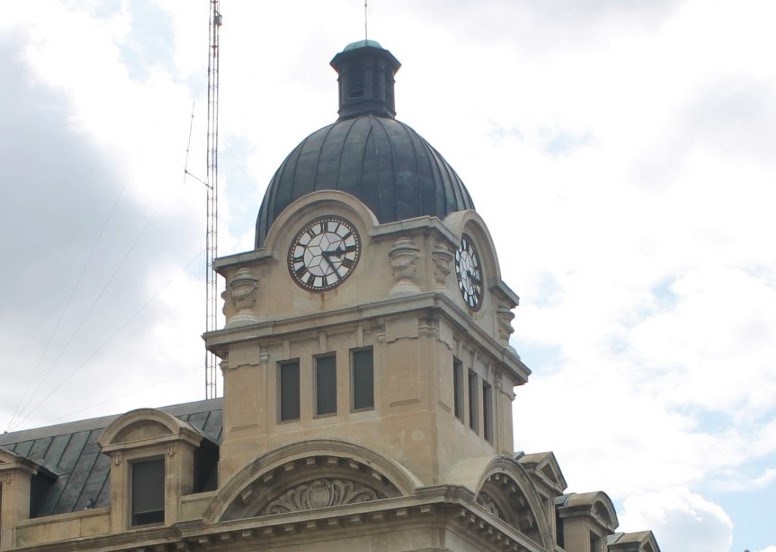MOOSE JAW — Coun. Patrick Boyle says an existing “loophole” in the zoning bylaw that allows some projects to proceed without public consultation should be eliminated — even if it means facing legal action.
Boyle introduced a motion during the Aug. 11 regular city council meeting that directed city administration to update the bylaw to move “supportive housing” uses from permitted to discretionary for R3 high-density residential district, R4 core residential mixed and C2 high-density commercial district.
This motion was in response to Ranch Ehrlo’s proposed supportive housing/treatment centre in the former Chez Nous Care Home on 1101 Grafton Avenue. Supportive housing is considered a permitted use in the zoning bylaw, which means public consultations are not mandatory.
After a lengthy discussion, council voted 4-3 to support the motion. In favour were Mayor James Murdock and councillors Carla Delaurier, Boyle and Jamey Logan. Opposed were councillors Heather Eby, Chris Warren and Dawn Luhning.
A ‘simple change’
Boyle said his motion would create a “very simple change” in the zoning bylaw that would order public engagement sessions, while permitted and discretionary use projects would result in the same outcome if the consultation process were followed correctly.
Continuing, he said administration produced a report connected to his motion discussing human rights, which he thought was interesting — and ironic — since such logic could apply to every bylaw and anyone could sue the city at any time.
“And … I’m fully prepared to take on that risk because I believe in our residents and that there is a better outcome we can achieve,” Boyle remarked.
Meanwhile, Boyle said the recent uproar over Ranch Ehrlo’s project showed that residents care since they understood its implications in their neighbourhoods. He thought the community would be having a different conversation if public consultation had happened months ago.
Conversely, he pointed to the Wakamow Detox Centre on South Hill, which faced similar opposition when it opened over a decade ago. The councillor noted that he spoke with centre staff, who said the venue consulted with residents to assuage their concerns.
“Fast forward 13 years and it operates in a residential neighbourhood and was done in the right way,” Boyle remarked.
Boyle pointed out that a small business owner must appear before council to acquire permission to move a shed, while a homeowner must acquire approval from neighbours to build a tall garage. However, Ranch Ehrlo didn’t have to take either of those actions, which was “wrong.”
Boyle added that this issue showed how a “loophole” in the zoning bylaw needed to be closed to ensure harmony in the community.
Unintended consequences
Eby said she understood Boyle’s intention and how people in the gallery were feeling, but pointed out that shelters like Transition House could be negatively affected by this change.
No one is supposed to know where that venue is since it’s for women fleeing domestic violence, she continued. However, if this motion passed and the non-profit organization needed to construct a new safe house, then everyone would know where it is because public consultations would be required.
“I believe that would be a very disastrous (and) unintended consequence … (and) is definitely something that could happen,” Eby said.
Eby noted that, unlike Boyle, she wasn’t interested in opening Moose Jaw to litigation, nor did she want to see the community portrayed negatively on national news outlets over such decisions.
Eby added that Boyle’s motion won’t change the fact that the Ranch Ehrlo project is still going ahead.
Slowing the process
Delaurier said more community involvement is required with projects like Ranch Ehrlo’s, while she thought city hall could make “workarounds” for organizations like the Transition House since that’s a “one-off” project. Conversely, there are many places that already exist in Moose Jaw that offer supportive housing, group homes or treatment centres.
Boyle’s motion would slow down the approval process, bring in the community for consultations, and ensure project proponents “have their ducks in a row,” she continued. Also, proponents would be forced to provide timely information, which wouldn’t leave residents scrambling to learn more about a project.
“… the process has to be followed and we have to have a fair process,” Delaurier added. “Not just for the people that are coming in, but for the people of Moose Jaw.”
Legal cases
Warren acknowledged that this issue was “sensitive and complex,” but pointed to the case law examples in administration’s report and how courts look unfavourably on cities — and rule against them — that define what a family is.
Moreover, those legal examples show that municipalities must avoid “people zoning” or using characteristics when crafting bylaws, he continued. He then asked administration how many supportive housing applications city hall had received recently.
Adminstration replied that in the past three years, it had received one application in the R3 district; two projects are in the planning stages in the R4 district; and two applications were received last year in the C2 district, while staff are meeting with a developer this week about a project.
These projects are becoming more prevalent because of recent funding announcements by the provincial and federal governments, so it’s important that the municipality review its zoning regulations and focus on land use since more applications are likely, administration added.
“I am 100-per-cent in favour of engagement and transparency and I believe we can definitely improve there,” said Warren, but noted that he was unwilling to create situations that involved discrimination or legal action.
Warren added that he wanted to wait for administration to produce a comprehensive review in 2026 of potential bylaw changes, which would allow council to understand the effects and let the community offer input.
Free enterprise ‘the right way’
In response, Boyle said it’s no surprise that more supportive housing-type applications are being presented, considering Ottawa is incentivizing developers to build huge housing units in residential neighbourhoods.
“That’s fine. I am … in favour of free enterprise, but it has to be done in the right way,” he continued. “And if it’s not done in the right way, it causes complete impacts to neighbourhoods.”
Boyle then asked administration how long it had used the current definition of supportive housing and how many lawsuits the municipality had faced. Administration replied that it had used the current definition of supportive housing as a permitted use since roughly 2018 and had faced zero lawsuits or human rights complaints.
Meanwhile, Boyle said if four supportive housing-type projects are being planned, then council could expect to hear from affected residents, while he didn’t want to see any projects “ramrodded” into neighbourhoods.
Boyle added that he was open to any businesses — like oil and gas, agriculture or transportation — operating here, but he was not interested in proponents forcing projects onto residents without consulting with them. This prompted the loudest applause of the night from the crowded gallery.
‘Through and through’ discrimination
Luhning said this motion bothered her since it was “through and through” discrimination against people who required support. Moreover, she was unwilling to have the city face legal consequences because it wanted to engage in “people zoning.”
Continuing, she said if council approved the motion and made such projects discretionary, then it would be forced to decide whether to approve such initiatives and residents opposed to them in their neighbourhoods would regularly fill the gallery.
“… I care about this city and we need to be open for business,” she added. “And these kinds of (motions) make us look foolish across the province and country … .”
Zoning issues
Logan said the problem he had with the Ranch Ehrlo project was that it is allowed in R3 districts but not R1 or R2, and it was being “plopped right in the middle” of R1 and R2 neighbourhoods and affecting homeowners.
“I want to prevent these things in the future,” he added. “I (also) don’t think we’ll see a legal challenge.”
The next regular council meeting is Monday, Aug. 25.




